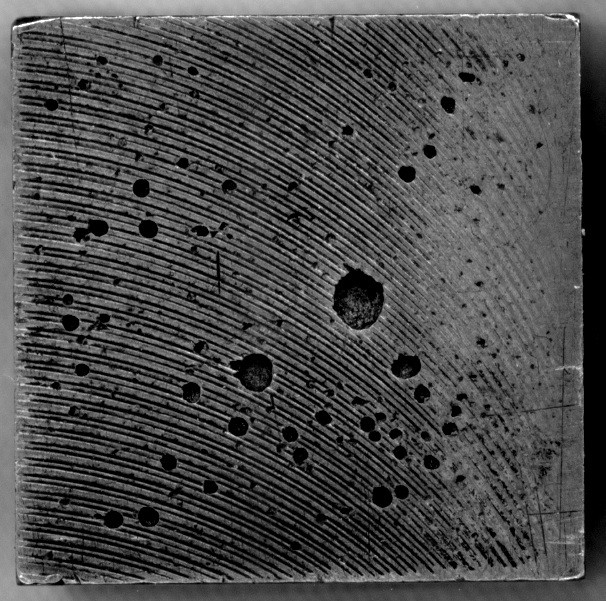Estampació en sec
Es una técnica que permite crear una imagen en relieve a partir de dos moldes (uno masculino y otro femenino) y ejercicio presión para que el papel coja una impresión multidimensional.
Àrea:
Àmbit:
Subàmbit:
Observacions:
Se trata de una acción
Referència:
Baddeley Brothers (s.f.) Blind Embossing. Recuperado el 13 de mayo de 2018 de Baddeley Brothers - Fine Printers & Envelope Makers of London: https://baddeleybrothers.com/blind-embossing/
Vincle:
Imatge:


Text:
What can make an image stand out from a page, or evoke the impression of ripples on a lake, or depict the delicate tracery of a cobweb stretched between bullrushes in the morning dew? Simply by creating a raised area using a die, blind embossing creates a subtle paper coloured image that can be felt as well as seen.
De-bossing uses the same technique to create an indentation. This can be as emphatic or delicate as the graphics or words dictate, and careful choice of paper (avoiding bright whites and very smooth materials) will enhance the effect.
Blind embossing – Like a piece of fine sculpture, blind embossing creates both visual and tactile appeal. It is especially effective when a subtly elegant, three dimensional image is desired.
An embossed image is formed using male and female moulds. Under extreme pressure, these two mould the paper to their shape, creating a multi-dimensional impression. When embosssed, the image is raised; when debossed, the image is below the paper surface.
Embossing dies come in several different styles, each with its own unique appearance.
A flat die creates a three-dimensional image that is raised above the paper surface; since its edges are straight it produces the most accurate reproduction of black and white line art
A round die creates a curved image curving out from the paper surface
Bevelled embossing gives an image with sloping sides and allows for a deeper impression
Sluptured dies create real dimension by forming the paper to several layers
The best embossing style for an given job will depend on the effect the designer wishes to achieve. Important considerations in blind embossing projects include the size, boldness and intricacy of the design, as well as the bulk of paper stock to be used. In general , bolder type and larger designs can be embossed more deeply, and heavier papers can achieve greater depth and detail.
To achieve the best results when designing for blind embossing…
Blind embossing basically flattens the paper in the embossed area so it is always more effective on textured paper stocks or laid sheets where it creates a contrast in the paper surface.
Line art and typography for embossing should be proofed at reproduction size, care must be taken in spacing type so that letters have room to form.
Because an embossed image is three-dimensional, it may appear slightly smaller than the same image produced by offset or other two-dimensional means. To compensate for this optical illusion, artwork may be prepared slightly bolder or at a slightly larger size.
The style of embossing, or the effect to be achieved, should always be clearly specified with the artwork. Providing a side view of the desired image, or a sample of the type of embossing desired is also useful to the die maker.
Embossing can be successfully combined with other fine print reproduction techniques such as engraving, lithography and foil stamping.
